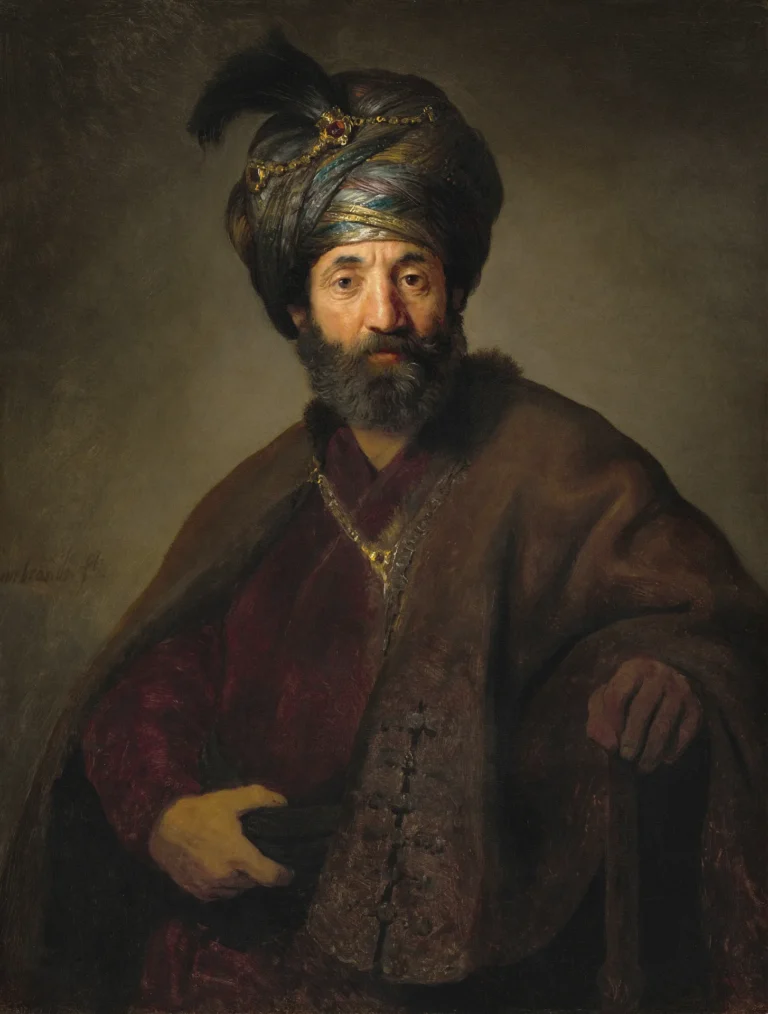Portrait of a Man in Oriental Costume
Rembrandt van Rijn's Portrait of a Man in Oriental Costume (1632-1633) showcases a striking portrayal of a man clad in exquisitely ornate Oriental attire, complete with a white turban. This piece exemplifies the artist's innovative use of chiaroscuro, highlighting the face and intricate details of the garment, contributing to the mystique surrounding the subject. The painting, part of Rembrandt's tronie series, reflects the 17th-century fascination with exoticism, and is recognized as a significant work in his body of art, currently housed in notable museums worldwide, including the Rijksmuseum and the Metropolitan Museum of Art.
1632 - 1635
About the Artwork
Created during a prolific period of Rembrandt's career, Portrait of a Man in Oriental Costume reflects the 17th-century European fascination with the exotic, particularly in the context of increased trade and cultural exchanges with the East. The artwork belongs to a broader genre known as 'tronies', where artists portrayed character studies intended to convey emotions rather than specific individuals. This approach allowed Rembrandt to experiment with light and shadow, imparting depth and life to his subjects. The painting was produced alongside another version of the theme, showcasing similarities that highlight both the artist's unique technique and the cultural themes of his time. The significance of these pieces goes beyond aesthetics; they encapsulate a period of burgeoning interest in the traditional attire and cultures from distant lands, marking a pivotal moment in art history.
Did You Know
Tronies, a genre in 17th-century Dutch art, feature character studies rather than traditional portraits. They focus on conveying emotion or particular expressions rather than capturing the likeness of a specific individual. Rembrandt’s adaptation of this style showcases his innovative approach to figure representation.
During Rembrandt’s time, costumes from the East symbolized wealth and sophistication. The fascination with Oriental garments in art reflected a broader cultural curiosity and was influenced by increasing trade routes and exotic narratives circulating in Europe, making it a popular theme in art and literature.
Rembrandt’s depictions of figures in exotic costumes influenced successive generations of artists. His remarkable ability to manipulate light and texture inspired many, setting a standard for portraying diverse cultural identities and attire, which has resonated firmly in the evolution of Western art.










